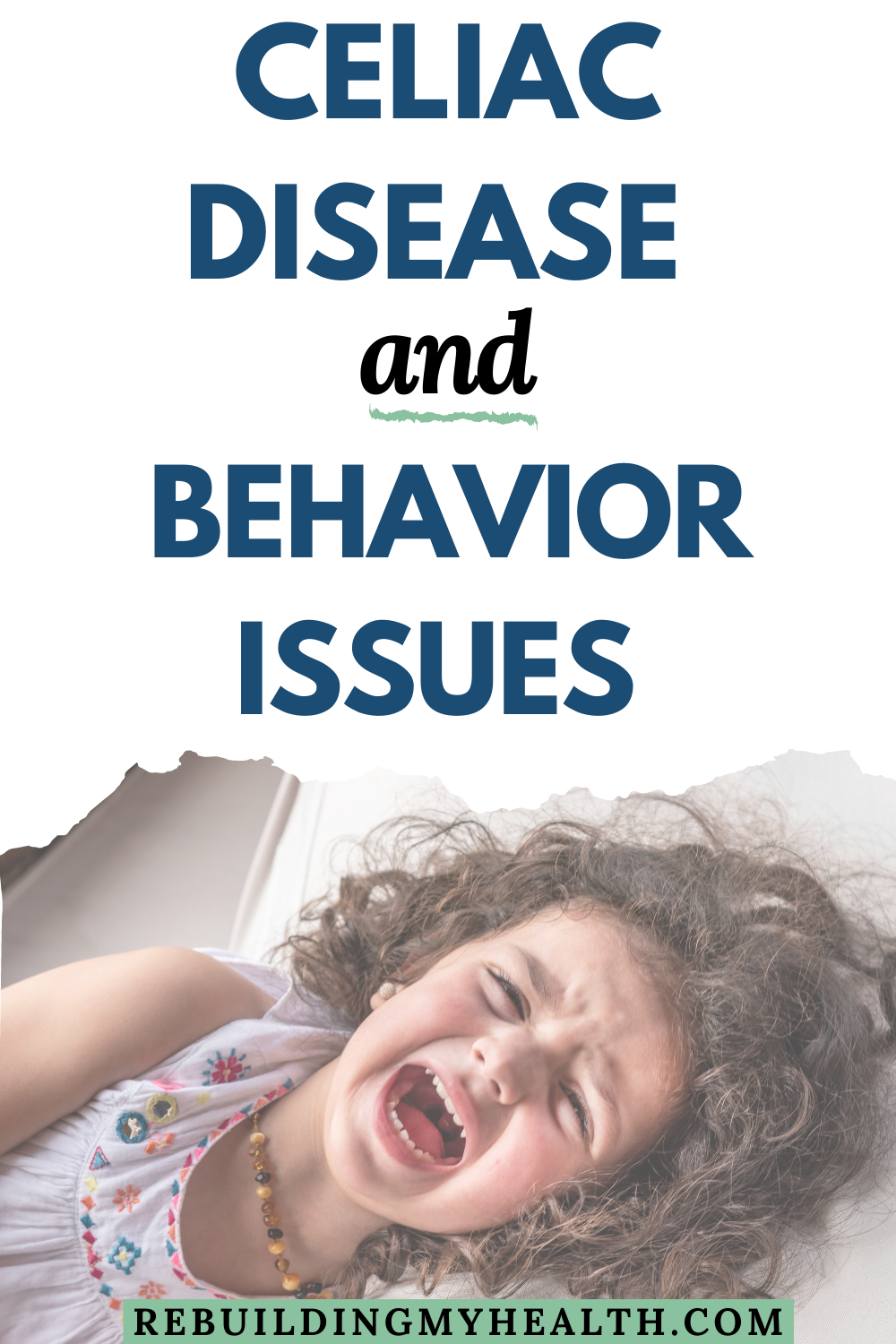Family Finds Unexpected Link between Daughter’s Behavior Issues and Celiac Disease
“The doctor told me, ‘She has to be off gluten immediately. With these numbers, there’s no question to me that she’s Celiac.’ That was a huge piece of the puzzle. It took us 10 years to get that diagnosis, and for someone to think outside the box and look for the root cause of her symptoms.”
– Tara, Olivia’s mom
Olivia had always been a relatively calm, even-keeled and joy-filled child. So when her moods started wildly swinging around age three – more extreme than the typical terrible threes – her parents were taken aback.
The behavior continued into elementary school, when toddler-style tantrums were still regular occurrences.
Adding to their concern, Olivia seemed unnecessarily forgetful at around age five.
“I felt like she couldn’t retain instruction well anymore,” said her mom, Tara. “I would ask her to do something like go get a hairbrush, and she’d get about halfway down the hall and say, ‘Mom, what did you ask me to do?’”
Events like these would come and go, and while they stayed in the back of her mom’s mind, any concerns expressed to practitioners were disregarded as “normal childhood” things. Though Tara trusted her daughter’s practitioners, she still couldn’t help feeling that something was off.
In another couple of years, there would be a few instances where Olivia would spontaneously forget how to tie her shoes after years of being able to do so. And her moods would swing erratically.
It would take a few more years, but Olivia’s family would eventually learn the cause of her behavioral issues – and ultimately fix them with…food.
Food Sensitivities from the Start
Olivia’s health challenges had started even earlier in the form of food intolerances and allergies. Within 30 seconds of her first drink of baby formula, she began sneezing profusely and wouldn’t stop.
Her parents switched to a dairy-free formula. Then at Olivia’s one-year appointment, the pediatrician recommended starting her on Lactaid instead of cow’s milk. On that advice, Tara introduced her to a small cup of Lactaid. Again, within seconds, Olivia’s lip swelled to two times its size.
While they carefully avoided dairy from then on and carried an Epi-pen due to the severity of her reactions, they were stumped when their daughter developed head-to-toe hives one day. Carefully recalling everything she had eaten, they eventually linked the skin reaction to the red dye in a strawberry pop tart, punch and even bubble bath.
On top of that, Olivia had long suffered from constipation, leading her pediatrician to put her on daily MiraLAX indefinitely until she “grew out of it.”
“As a parent, it didn’t sit right with me,” Tara says. “Like, why would I need to give my child a laxative on a daily basis?”
At the time, Olivia ate a fairly typical American diet, except without dairy, red dye and peanut, all found to be allergens for her. Her family ate relatively healthfully, even milling their own flour for bread.
Linking Behavior Issues to Celiac Disease
One morning, at about age eight, Olivia ate Cheerios for breakfast, and not long after, threw a full-on temper tantrum.
“She was flat on the ground crying uncontrollably,” Tara says.
The first time, her parents didn’t associate the behavior with the cereal. But when it happened two more times following Cheerios, the breakfast O’s became the prime suspect.
“She had improved slightly with the milling of our own wheat, so we thought it was a reaction to processed food, not gluten,” Tara says.
Her mom started her on cod liver oil – known to reduce inflammation – and Olivia’s moods became better, but were still troublesome.
For help, they eventually turned to the Cleveland Clinic Center for Functional Medicine in Cleveland, Ohio. There, they ran a full range of tests and uncovered extremely high antibodies to wheat, indicating an allergy.
“The doctor told me, ‘She has to be off gluten immediately,’” Tara says. “He said, ‘With these numbers, there’s no question to me that she’s Celiac. He didn’t feel like she needed a colonoscopy to prove it.”
“That just explained so much,” Tara says. “That was a huge piece of the puzzle. It took us 10 years to get that diagnosis, and for someone to think outside the box and look for the root cause of her symptoms.”
Gluten Triggers Behavioral Issues
With her daughter’s new celiac disease diagnosis, Tara realized she had to eliminate gluten completely from their kitchen – a major shift after making 12 loaves of sourdough bread a week to feed their large family.
“Even though we had moved on to only organic, freshly milled, sourdoughed wheat, as soon as we removed gluten, the behavior dramatically improved. She was 90 percent better,” Tara says.
Occasionally, however, Olivia would be exposed to gluten at school or a friend’s house and her behavior would immediately deteriorate.
“Within three days of eating gluten, her mood and behavior would change and her self-control would be completely gone,” Tara says. “Her behavior was erratic, her impulse control was gone, and she was mouthing off or acting angrily towards her siblings.”
It took the pre-teen about 12 to 18 months to really accept and get used to her new diet. Beyond gluten, she stays away from processed food, dairy and most sugar.
As Olivia has become a teenager, it’s remained hard as she watches her friends eat regular pizza and baked goods – big no-no’s with celiac disease. But she sees the upside of her super clean diet.
“She’s kept really clear skin through her teen years and when her friends ask, she tells them, ‘It’s what I eat.’”
Removing gluten from her diet also relieved longstanding constipation she’d suffered from since her toddler years, which was likely related to celiac disease.
Today: A Thriving Teen
Working with the Cleveland Clinic, Olivia’s family, through stool testing, also discovered she had estrogen dominance. The hormonal imbalance occurs when the body has difficulty breaking down estrogens and removing them from the body. If not metabolized properly, they can remain in the body and become toxic.
Along with a gut restoration protocol, Olivia’s family used calcium D-glucarate based on the doctor’s recommendation and analysis of her other tests/factors. Tara stresses that families should get personalized guidance from their doctors before supplementing.
Lab testing also revealed that Olivia is heterozygous for the MTHFR (methylenetetrahydrofolate reductase) 1298 gene variation. The mutation can lead to high levels of homocysteine in the blood, and difficulty processing folate and other vitamins, as well as with eliminating toxins efficiently.
This can cause a range of possible symptoms, including cardiovascular and thromboembolic diseases, mental disorders, certain cancers, chronic pain and fatigue, nerve pain, migraines and pregnancy problems.
Those with the gene variation need to supplement with methyl folate, rather than straight folate, and take extra steps to detox.
Olivia’s practitioners developed a supplement and gut restoration protocol for her. And with help from a health coach, Melanie Schvartz of Red Bridge Wellness, Tara and Olivia were able to navigate thought processes and added supplements and practices that help her body function optimally and lean into the mindset of how to fuel her body in a way that works for her, even if it is contrary to the norm.
These days, she’s a thriving 15-year-old who’s active in singing. She knows her body well and understands that she has to stay away from triggering foods.
“She knows that, if she doesn’t monitor her choices, her body’s going to react,” Tara says. “It took a number of years to adjust, but the older she got, the easier it got. Because we had done the mindset work with Melanie – working through the education and reframing pieces that are so important to optimizing her wellness – she’s able to think through cause and effect and make better choices much more often.”

The information on this site is for educational and inspirational purposes only and is not intended to replace the advice of qualified professionals. Keep in mind that what works for one person may not work for another. Always consult your healthcare practitioners before beginning new approaches or treatments. Some links on Rebuilding My Health may be affiliate links. This means that we may receive a commission - with no additional cost to you - if you make any purchases using those affiliate links. Rebuilding My Health is a participant in the Amazon Services LLC Associates Program. Learn more.


